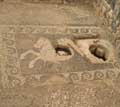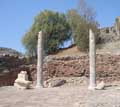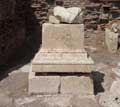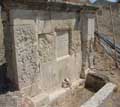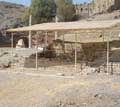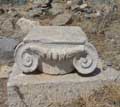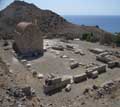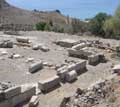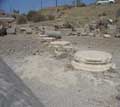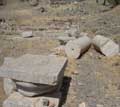
The ancient city of Levina is located in the beautiful and calm bay facing the Libyan Sea, at the southern foothills of Asterousia. There, between two capes (Cape Leon to the west and Psamidomouri to the east), the gulf is formed, which today is called Lentas. Following from Levina a straight imaginary line to the south will meet Levina, which was known as the port of Gortyna, but much more so for the important sanctuary of Asklepios that it possessed. The name of the ancient city is probably Phoenician and probably derives from the shape of the western cape which resembles a lion's head. The heyday of the sanctuary of Asclepius goes back to the Hellenistic and Roman times.
The first traces of life in the area of Levina already appear in the Neolithic Age, where remains of habitation have been identified on the rocky summit of Cape Leon. The first confirmed settlement, however, dates back to the Proto-Minoan era (2600 - 2000 BC).
According to the ancient sources (Stravonas, Philostratos) the city of Levina once again experienced growth and development, when it became the port of Gortyna, when the sanctuary of Asclepius was also built, in the 4th century BC. The same sources also state that the Gortynians founded the sanctuary according to the rules and rites that applied to the sanctuary of Epidaurus. Levinas must have experienced great prosperity in the 2nd century BC, when Gortyna, after the destruction of Phaistos in the middle of the 2nd c. BC, it became the capital of Mesara and later of all Crete. A terrible earthquake in 46 BC, described by Philostratus, destroys the city. However, the city of Levina was rebuilt again in Roman times and became an important trading post between Egypt and Crete.
Editor: Fotini Anastasopoulou










